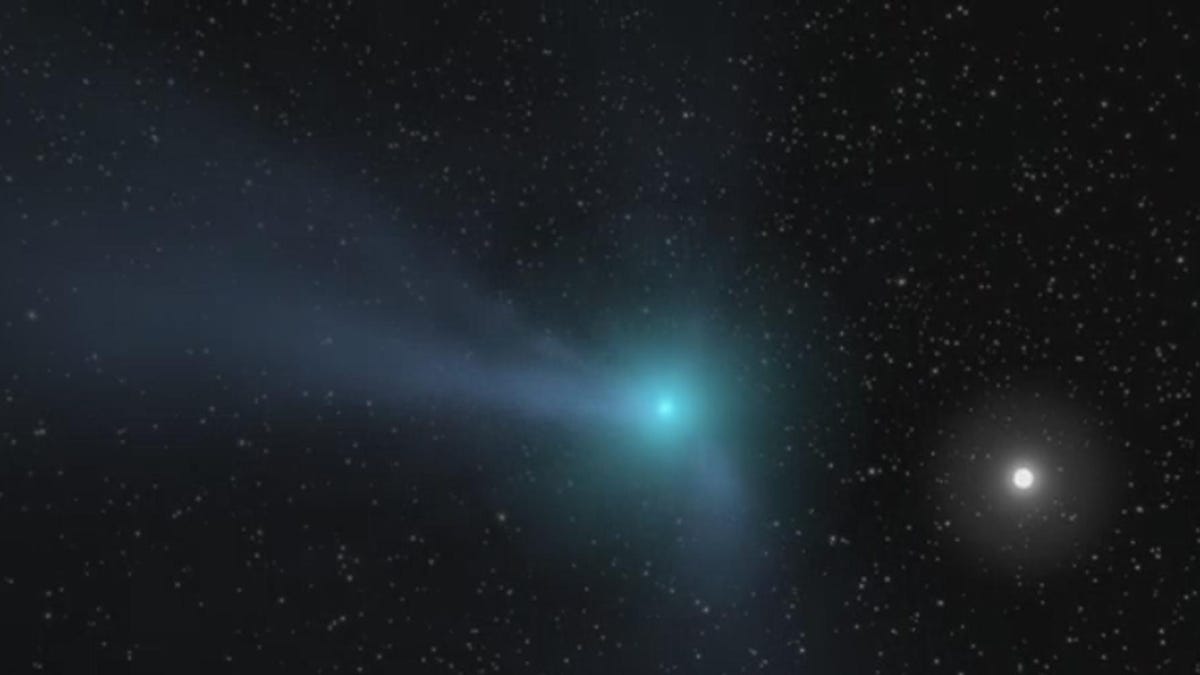Monster comet discovered falling toward the sun may be biggest ever
Bigger than a normal space rock but smaller than a planet.

2014 UN271 could be one for the ages.
If there were any dinosaurs still around, they'd probably be having horrible flashbacks reading the news this week of a giant space rock racing toward the inner solar system from deep space.
A newfound comet heading in the direction of the sun isn't exactly a big deal. That's basically what comets do. But this one, which has been cataloged as 2014 UN271, stands out for a couple of reasons.
First, this space snowball could be around 125 miles (200 kilometers) wide, which puts it somewhere in between a giant comet and a dwarf planet. Consider that comet Hale-Bopp, one of the larger, brighter comets in recent memory, was only 24 miles (40 kilometers) across.
If the early estimates of its size hold, 2014 UN271 might even set the record for biggest comet ever spotted. But there's still quite a bit of uncertainty at this point. It could be that part of the width in early observations is actually a coma or tail and that the nucleus is far smaller than it currently appears.
That said, the pixelated images of those early observations shared by University of Pennsylvania astrophysicist Pedro Bernardinelli, who discovered the object, sure look completely tail-less.
The object showed no coma in any of the (5 band) DES images between 2014-2018 (when it moved from 29 to 23 au). The residuals of a scene-modeling photometry of this objects shows consistency with noise (both in each image and in a stack of all 30 something images we have) pic.twitter.com/7JIibMPyZS
— Dr. Pedro Bernardinelli (@phbernardinelli) June 20, 2021
In addition to being colossal, 2014 UN271 has a very, very long orbital path that originates 1.25 trillion miles (2 trillion kilometers) from the sun at the very edge of the solar system.
"From that distance the sun's gravity is so weak a whisper could push this thing into interstellar space," writes astronomer Phil Plait.
Astronomer T. Marshall Eubanks estimates it will make its closest pass to the sun in just under a decade, on Jan. 28, 2031. This should give observatories like the nearly complete Vera C. Rubin Observatory in Chile several years to watch the comet's approach.
The European Space Agency's Comet Interceptor mission, planned to launch in 2029, has already said it won't be able to rendezvous with 2014 UN271, but Eubanks is optimistic that "a number" of currently available rockets could intercept the comet as it approaches.
... factor is fuel. Comet Interceptor won't carry enough of it to reach that far from the Sun. So, our mission will be targeting another, currently undiscovered comet from the solar system's outer reaches that will venture much closer to the Sun, near Earth's distance. The...
— CometInterceptor (@CometIntercept) June 23, 2021
While this new comet is huge, it won't actually be coming that close to Earth, compared with other famous comets of the last few decades. Nonetheless, it may be visible with a good telescope, and astronomers are sure to provide plenty of images and new data on it in the years to come. Plan to get to know this one pretty well.
Follow CNET's 2021 Space Calendar to stay up to date with all the latest space news this year. You can even add it to your own Google Calendar.

